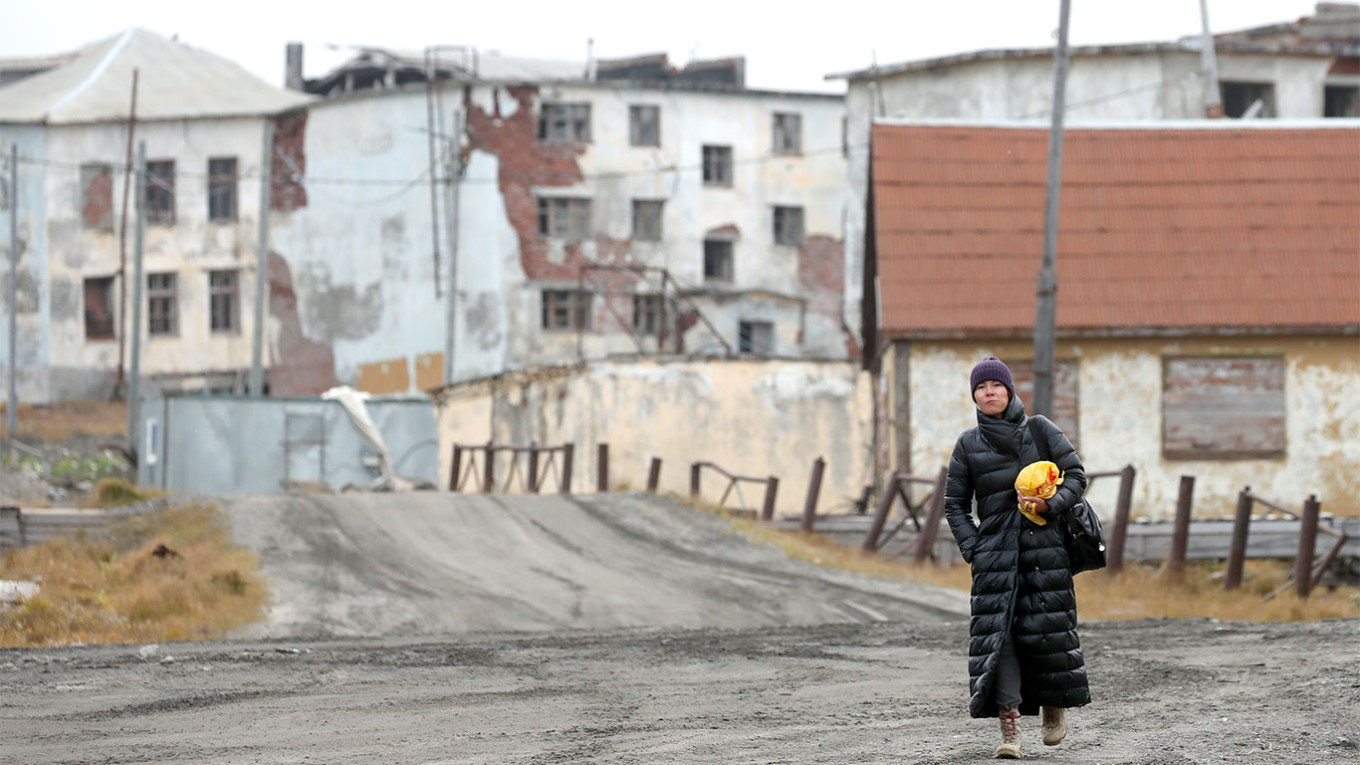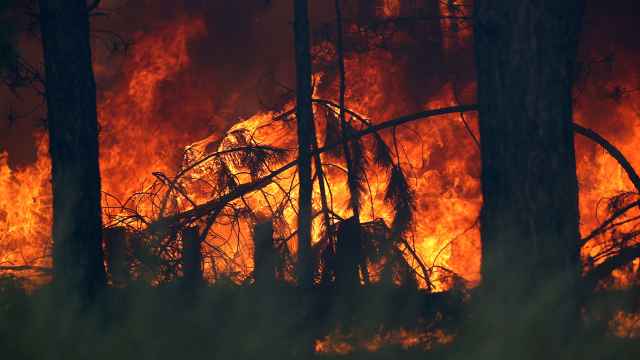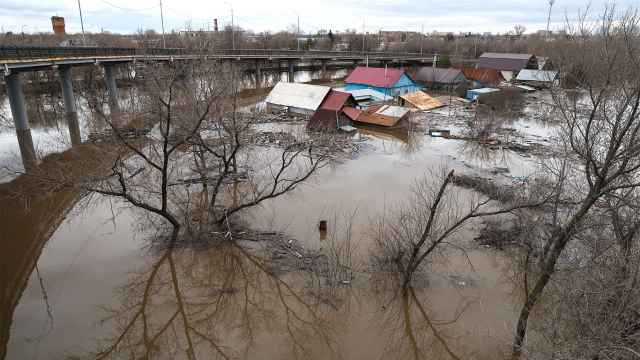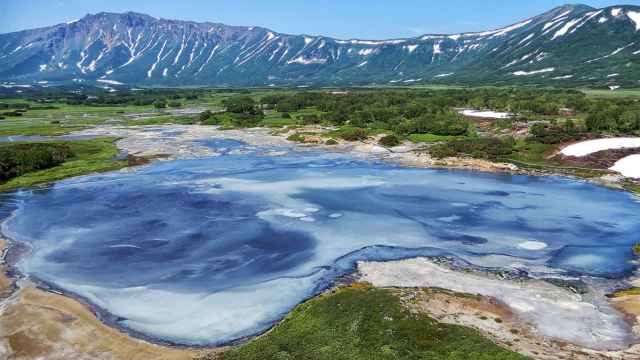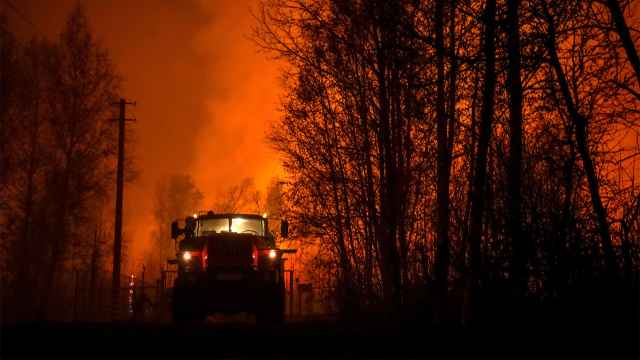Russia’s regions stand to experience the effects of climate change in diverse ways, with some hit much harder than others, according to a recent study co-authored by Moscow-based climatologist Alexander Chernokulsky and economist Igor Makarov.
As manmade global warming progresses — with 2023 marking the warmest year ever recorded — Russia may soon find itself in the midst of multiple climate change-fueled crises.
“A typical scene in Vorkuta or Noyabrsk is [seeing] cracks in the walls of houses,” one Russian climate expert told The Moscow Times, recalling visits to permafrost-covered regions in the north.
The expert requested anonymity due to their affiliation with a group that has been targeted by the Russian authorities.
“One of the most memorable examples is a residential high-rise in Noyabrsk [a city of 100,000 inhabitants in the Yamal-Nenets autonomous district], or rather what's left of it, as the building was simply demolished due to it becoming too dangerous to live in,” they said.
Russia is already experiencing intensifying droughts, floods, hot spells and accelerated permafrost thaw across its vast territory, whose climatic conditions range from subtropical to Arctic.
After assessing four major risks — heat waves, water stress, wildfires and permafrost melting — the study’s authors ranked Russia’s regions according to which will suffer the heaviest economic toll — and where early adaptation is most needed.
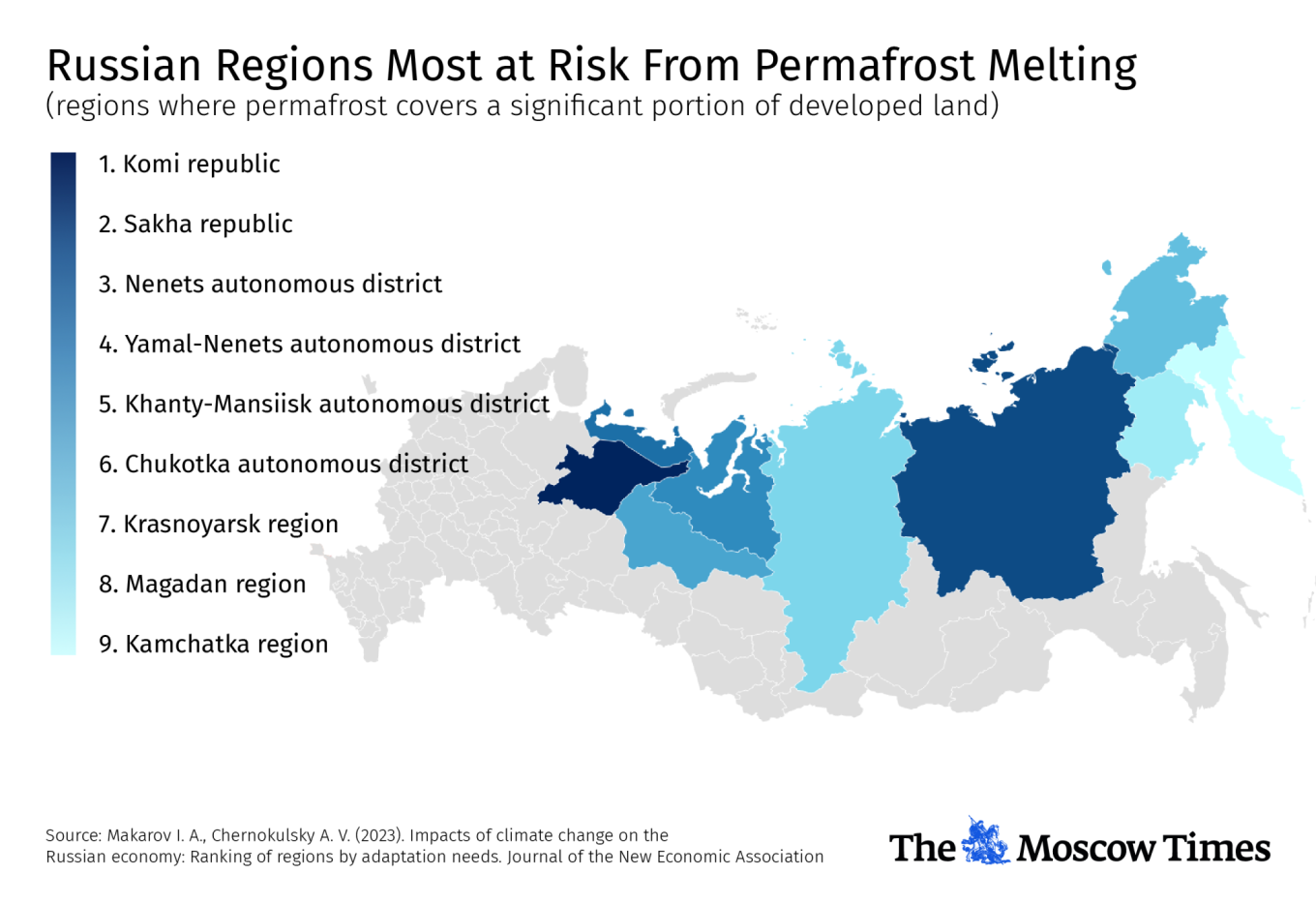
High forecast
Many Russians still recall the heatwave of summer 2010, which was one of the deadliest in the country’s history with 56,000 victims across Moscow and its surrounding region. During that time, heavy smog from wildfires enveloped the capital and made climate change a tangible hazard for Muscovites.
In a warming world, such periods of abnormally high temperatures — which increase the population’s mortality rate — will become more common and intense in Russia.
The researchers examined the projected number of extremely hot days (with maximum temperatures exceeding 35 degrees Celsius) and tropical nights (with minimum temperatures above 20 C) for Russia in the future and concluded that extreme heatwaves will pose the greatest threat to urbanized areas in the center and south of European Russia, as well as to the south of the Urals and of western Siberia.
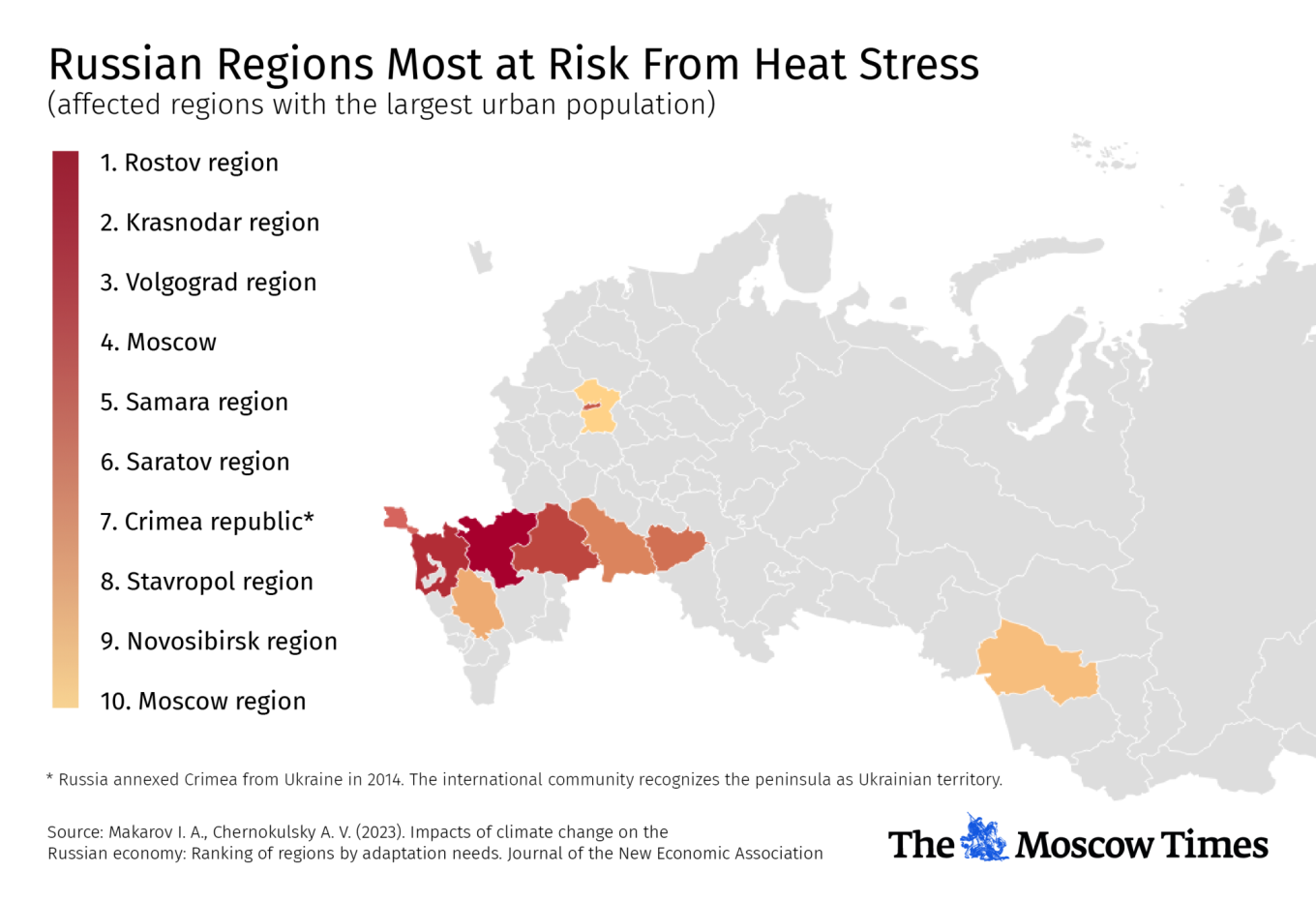
If global greenhouse gas emissions continue as usual with no efforts to curb them, Russia’s southern regions — Krasnodar, Rostov, Stavropol, Astrakhan and Kalmykia — could endure an additional 13 to 26 extremely hot days on average by mid-century (2040-2059).
If the world takes minimal action to reduce emissions, the same regions would see eight to 20 deadly heat days.
Similarly, moderate climate action will see tropical nights across Russia’s south, with the above-mentioned regions experiencing 25-30 more nights with temperatures above 20 C annually by mid-century.
Without mitigation efforts, tropical nights could reach Russia’s polar tips including the republics of Komi and Karelia as well as the Arkhangelsk region.
That would result in more deaths from excessive heat, disproportionately affecting the elderly, individuals with chronic illnesses and those living below the poverty line, the study noted.
The health risks tied to abnormal warmth will be greater in the presence of wildfire smoke — a significant risk for regions in Russia’s forest belt, from its central European regions to central Siberia and the south of the Far East, the study found.
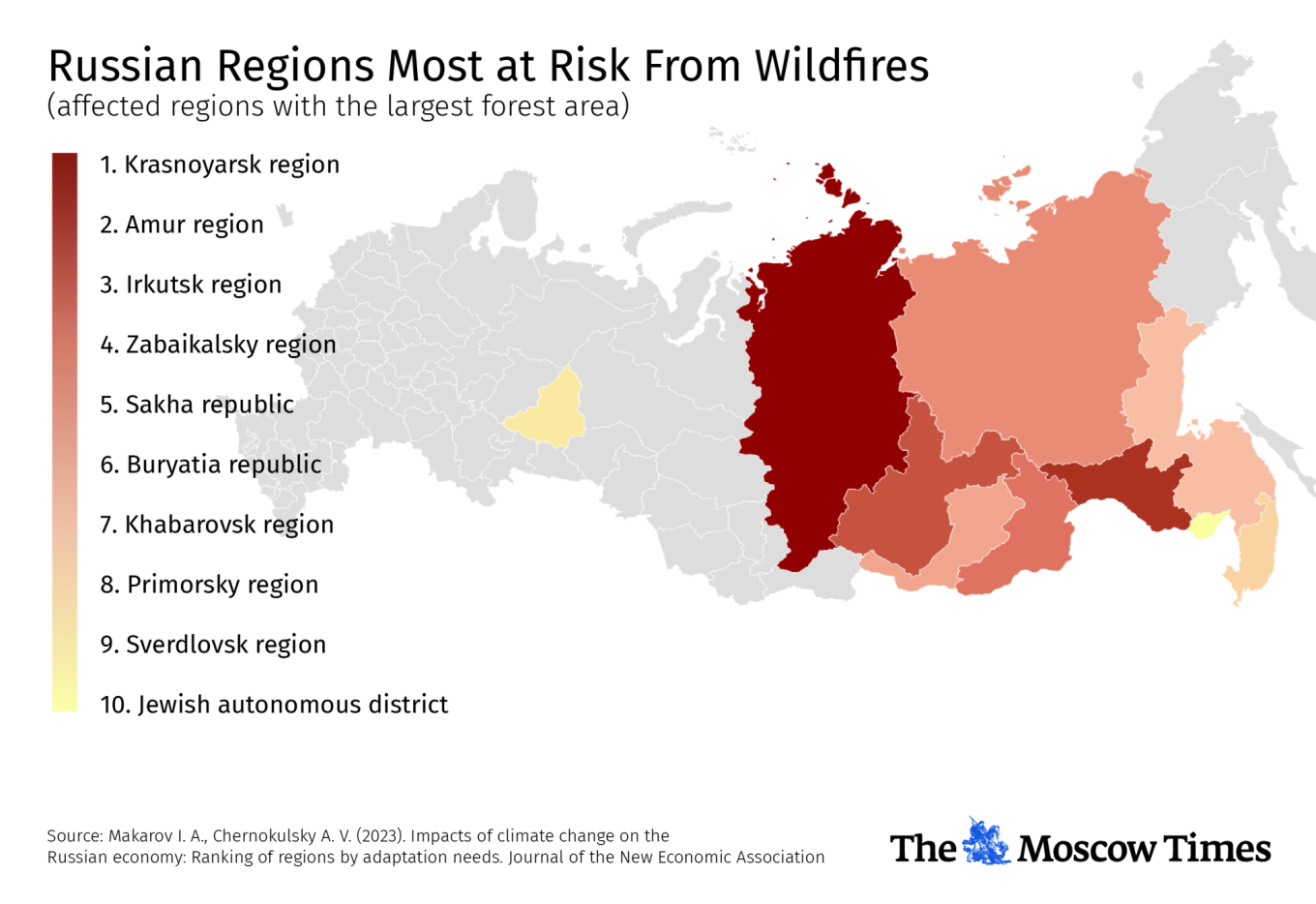
While the worst-case emissions scenario is less likely, a path resulting in about 3.6 C of warming by the end of the century is “quite possible,” study co-author Chernokulsky, a climatologist and the acting deputy director at the Obukhov Institute of Atmospheric Physics, told The Moscow Times.
“Is it possible to adapt? To some extent, yes, but some losses are unavoidable, no matter how you adapt,” he said. “Our task is to minimize losses, that is, to adapt nonetheless.”
A costly future
The crop-producing republics of Chuvashia and Tatarstan, as well as the Omsk region, declared a state of emergency in 2023 due to a drought that destroyed seedings.
Despite a rise in annual precipitation in the country in general, some southern regions witnessed a 25% decrease in summer rainfall from 1976 to 2022.
Climate-induced water stress will strike precisely those regions that are currently the most fertile, like Chernozem, the “Black Earth” region of central and southern Russia, the study found.
Major grain-producing regions such as the Rostov, Krasnodar and Stavropol regions, which already face water shortages, are likely to see worsening conditions due to climate change.
The southern regions of the Urals and western Siberia also stand to lose the most economically from water stress, the researchers said, warning that ignoring climate risks poses a threat to Russia’s food security.
The anonymous climate expert said Tatarstan as well as the Voronezh and Volgograd regions are particularly prone to water scarcity risks, which they observed during trips there in drought years.
"The pictures that are in front of my eyes are conversations with farmers in Tatarstan who showed dried-up wells and talked about how they are forced to slaughter their livestock because there's simply nothing to feed them," they said.
Moreover, the researchers found that the Moscow, Voronezh and Chelyabinsk regions are likely to be simultaneously impacted by three “climate hazards” — abnormal heat, water stress and wildfires.
“It is highly likely that if adaptation measures are not implemented, these regions will experience the greatest losses in terms of both population and economy due to climate change,” the study said.
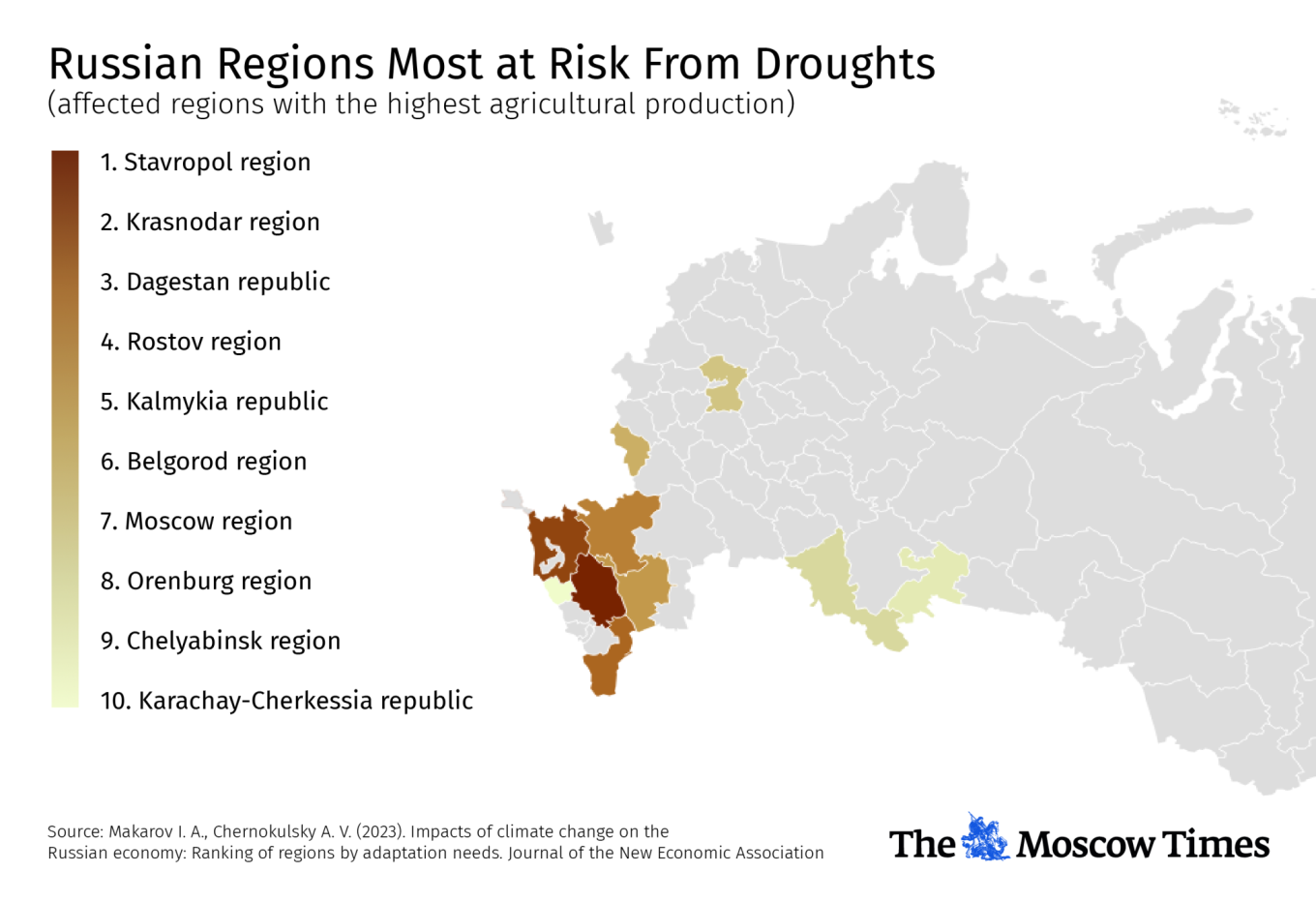
In addition to the risks outlined in the study, Russia is witnessing a surge in extreme weather events. Central Russia and southwestern Siberia are facing more frequent downpours and storms, while the Black Sea coast is experiencing increasingly tropical rainfall as the sea’s temperature rises.
Russia’s largest bank Sberbank said the country’s annual economic damages from climate change could reach up to 580 billion rubles ($6.7 billion) from 2023 to 2027, a figure comparable to the damages from the September 2023 Morocco earthquake.
Higher estimates suggest losses of 1-2% of Russia’s GDP per year until 2030, with potential economic damage in climate-exposed regions reaching 5-6% of their gross product.
In the Yamal-Nenets autonomous district, whose inhabitants are already observing the alarming effects of the climate crisis firsthand, local authorities currently spend tens of millions of rubles annually on cooling systems beneath buildings to prevent their collapse due to melting soil.
But many Russian regions have not yet taken steps to prepare for the impending reality of a dangerously warmer world.
Adapting to the inevitable
The notion that Russia can benefit from climate change has circulated in the country for decades. President Vladimir Putin famously joked in 2003 that Russians would not need to buy as many fur coats on a warmer planet.
A recent report from the Russian Agency for Strategic Initiatives suggests positive aspects of climate change such as prolonged navigation along major rivers and increased economic value of Russia's abundant natural resources like water, forests and soil.
Still, in its climate doctrine last updated in October, Russia recognized climate change as a threat to national security and acknowledged the need for timely adaptation to the "inevitable" climate change in the coming decades.
Some regions have already rolled out adaptation programs, utilizing new equipment for monitoring wildfire hazards in the Irkutsk region or expanding heat-tolerant plant cultivation in annexed Crimea.
Existing adaptation efforts nonetheless fall short of what is needed, experts told The Moscow Times.
For permafrost melt, the quality of adaptation programs varies widely from region to region, said Nikita Tananaev, laboratory director at North-Eastern Federal University and lead researcher at the Melnikov Permafrost Institute in Yakutsk.
Some plans lack specific measures, consisting only of “discussions, meetings and data updates.”
“There are regional adaptation plans where it's a complete mess, as in Yakutia, and in some places, they are better, such as in the Murmansk region. However, creating a plan and implementing it are different things,” Tananaev said.
The awareness of the need for adaptation only recently came to Russia, with the corresponding government decree adopted in 2019, an anonymous expert said.
“By that time, the European part of the country had already experienced the nightmare of the 2010 heatwave, the loss of tens of millions of hectares of forests due to fires from 2010 to 2019, and so on,” they said.
“But the fact that such a decree [of 2019] and such a ranking [of regions] appeared … indicates that there is a chance that adaptation will still take place at a level that is possible with current technologies.”
A Message from The Moscow Times:
Dear readers,
We are facing unprecedented challenges. Russia's Prosecutor General's Office has designated The Moscow Times as an "undesirable" organization, criminalizing our work and putting our staff at risk of prosecution. This follows our earlier unjust labeling as a "foreign agent."
These actions are direct attempts to silence independent journalism in Russia. The authorities claim our work "discredits the decisions of the Russian leadership." We see things differently: we strive to provide accurate, unbiased reporting on Russia.
We, the journalists of The Moscow Times, refuse to be silenced. But to continue our work, we need your help.
Your support, no matter how small, makes a world of difference. If you can, please support us monthly starting from just $2. It's quick to set up, and every contribution makes a significant impact.
By supporting The Moscow Times, you're defending open, independent journalism in the face of repression. Thank you for standing with us.
Remind me later.


